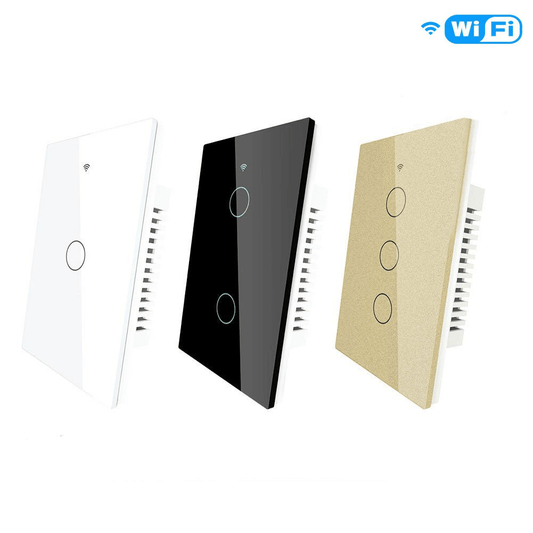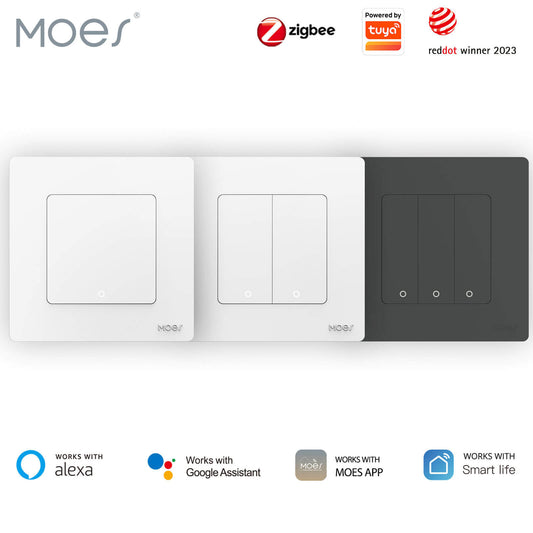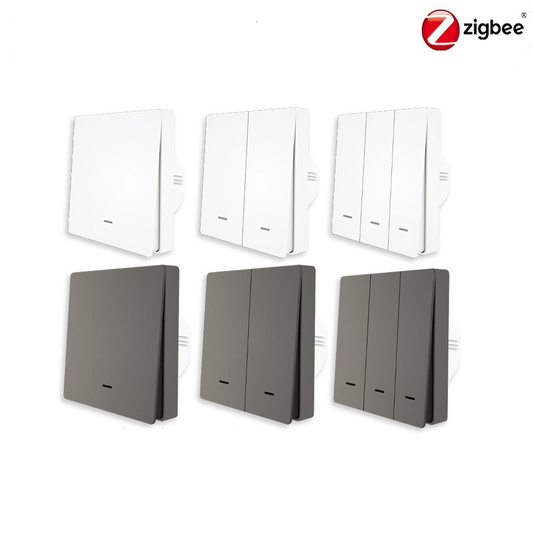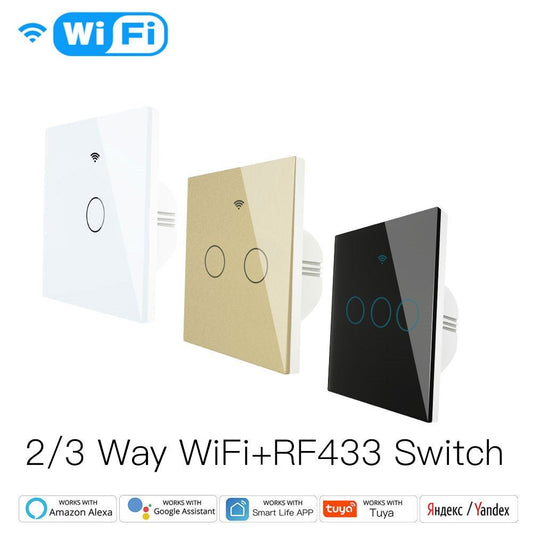WiFi smart switches are crucial devices propelling home automation forward. They conveniently control lights, home or garage doors, and motorized blinds, among other functions. Due to their versatility and affordable pricing, smart switches are gaining increasing popularity among consumers. Understanding how smart light switches work can help you make informed decisions and enhance your home living experience.

What is a Smart Light Switch?
A WiFi smart switch is a programmable wireless switch that offers more advanced features than traditional switches. These features include remote control, support for three-way switches, and built-in motion sensors. You can still operate your lights as you would with a traditional switch, but smart switches allow you to manage your home's lighting, fans, and other appliances more intelligently.
With a smartphone app, like our MOES APP, you can control these switches from anywhere, anytime. Additionally, they can connect to smart plugs and be voice-controlled through smart voice assistants, making them an indispensable part of modern homes.

How Smart Switches Work
Smart switches use various communication protocols (such as Wi-Fi, Bluetooth, Zigbee, or Z-Wave) to send wireless signals to control smart lighting devices. They connect to smart bulbs and other smart hardware through your home’s Wi-Fi network, enabling seamless integration and control.
Installing smart switches typically requires basic DIY skills, and the specific steps may vary depending on the model and your home’s electrical setup. By following the manufacturer's instructions and using a smartphone app to configure the new switch, you can easily complete the setup and ensure that your smart light switch is immediately operational.
Differences Between Smart Switches and Dimmable Lighting Systems
Although smart switches and dimmable lighting systems both involve controlling home lighting, they have distinct differences in functionality and application. Smart switches primarily handle power supply and switch operations. They connect to the home network via Wi-Fi or other communication protocols, supporting remote and automated control. They are suitable for controlling standard home lights, fans, and other appliances, offering flexible timing and remote operation functions.
On the other hand, dimmable lighting systems focus on adjusting the brightness and color temperature of the bulbs, typically using smart LED bulbs. These systems allow users to adjust lighting effects based on different times and activities, such as using high color temperature in the morning to enhance alertness or warm color temperature in the evening to create a relaxing atmosphere. Their design aims to optimize lighting quality and comfort, providing a more refined lighting control experience.
Advantages of Using Smart Light Switches
One of the significant advantages of using smart light switches is their unparalleled convenience. Modern smart switches make controlling home lighting incredibly easy, enabling operations through a smartphone without the need to get up and handle traditional switches. Whether turning lights on or off, adjusting brightness, or setting timed switches, everything can be effortlessly achieved via smart switches.
Smart switches often come with built-in timer functions, allowing you to adjust lighting effects at different times of the day according to personal preferences. For instance, enjoy soft and comfortable lighting at night or wake up naturally with gentle lighting in the morning. These smart features not only improve quality of life but also help save energy costs through intelligent programming, ensuring lights are only on when needed.
Additionally, the design of smart switches is more elegant and modern, highly compatible with other smart home devices, and can seamlessly integrate into existing home ecosystems. This compatibility ensures that smart light switches work harmoniously with smart motion sensors, smart plugs, and other devices, creating a fully automated and efficient living environment for users.
Types of Smart Switches
The market offers various types of smart switches, including touch smart switches and WiFi relay switches. They are meticulously designed to be compatible with existing smart home devices, providing more options for your home automation needs.
Touch Smart SwitchThese smart switches typically feature a touchscreen for operating switch functions. Users can turn lights on or off by touching the screen, and sometimes perform other function settings and adjustments. |
|
WiFi Relay Smart SwitchThese smart switches are installed in wall junction boxes and look similar to traditional switches. However, they connect to other smart devices like smartphones or smart home hubs via WiFi for centralized control and intelligent management. |
|
WiFi Smart SwitchWiFi smart switches achieve remote control and intelligent operation by connecting to the home’s WiFi network. Users can control home lights and appliances remotely through a smartphone app or an internet platform, supporting timed switches and other automation functions. |
Zigbee Smart Switch
These switches use Zigbee wireless communication protocols, typically requiring a corresponding smart gateway or controller. They are suitable for building more complex smart home systems, supporting multi-device interconnection and scene settings.
Each type of smart switch has its unique advantages and applicable scenarios. Consumers can choose based on their existing smart devices and needs to achieve a smarter, more convenient home control experience.







